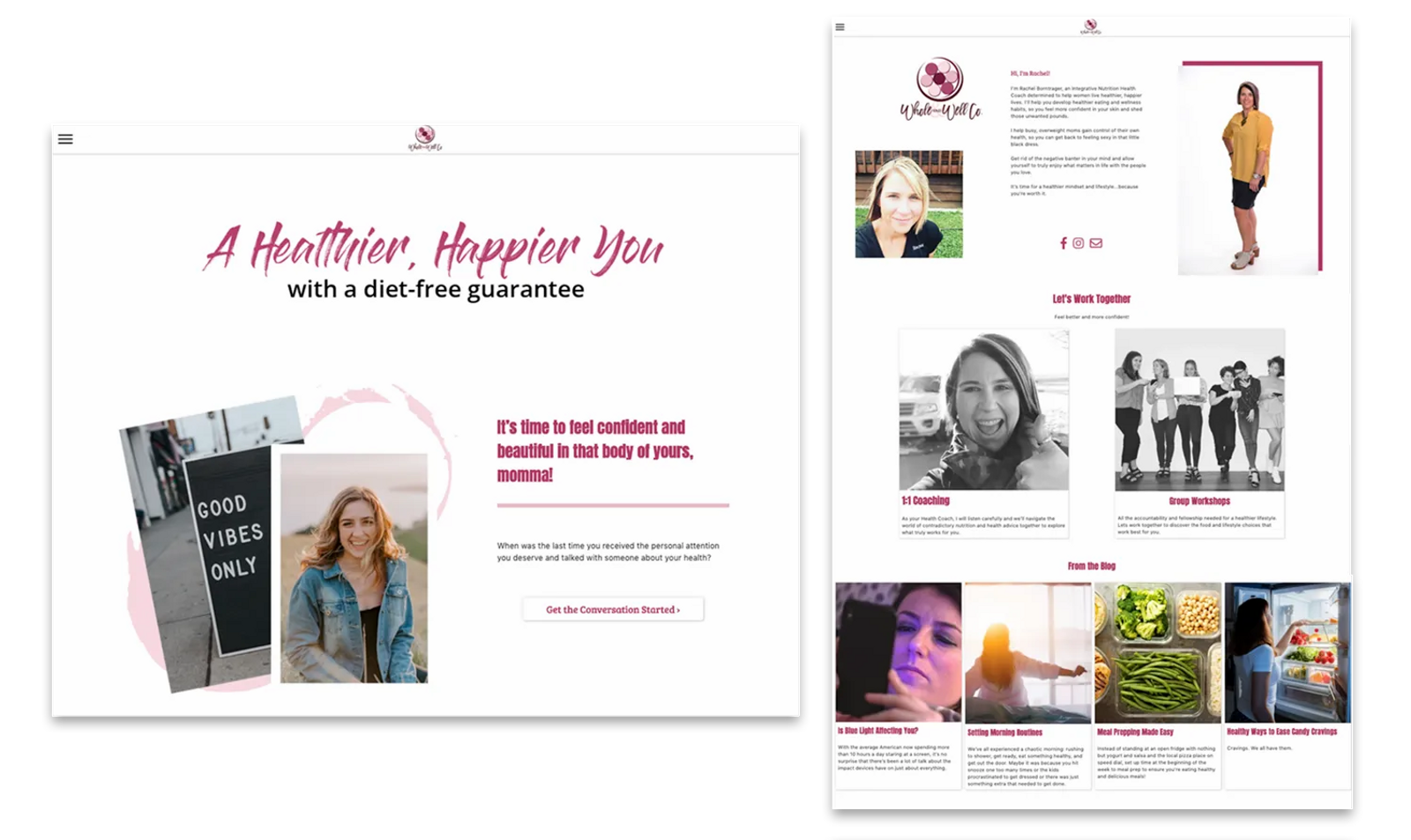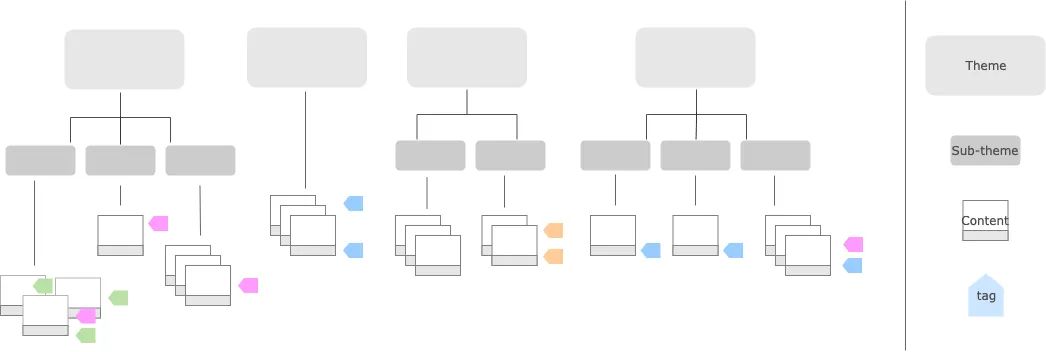A Guide to Organizing Content On Your Website
You've decided to create a new website (or organize your existing site)! (Virtual High Five!)
It's tempting to get in there and start playing, adding photos, and making your site "look" amazing! In fact, we highly encourage doing this.
But first, you should create a website content strategy.
This critical step is where we see many site owners get held up. It can be overwhelming to decide on how to organize everything, but it doesn't have to be. Think of this as an iterative process. Start with what makes sense now and understand that you can and will change it later.
Here is a General Framework to Help Get You Started
We suggest starting by drawing your thoughts out on a whiteboard or with pencil and paper (sometimes you think better away from a screen). If you prefer to use software for this purpose, check out draw.io.
Let's dive in!
Your Homepage
Your homepage should quickly communicate what you and your brand are all about. You're taking your customer through a journey. You want to get the hooked at the top of your site and entice them, then, to scroll to learn more.
This is a great example from fellow BSW Member, Rachel Borntrager with Well and Co. Her headline captivates the audience with a benefit and is immediately followed by a statement the reiterates the pain point her solution solves "It's time to feel confident and beautiful."
As you continue to scroll through her site, you get more information about Rachel and why she is the best person to help with this need, how you can work with her, and then she demonstrates her authority in the space by providing quality content that you can dig into to learn more. She's providing value alongside information about her and her program.

And content is an important piece of this puzzle! When you produce content on your website, you're giving your ideal audience a reason to visit your site well before they are ready to make a purchase. It lets you begin establishing a relationship with them. A relationship you can foster until they are ready to buy and beyond.
Begin with Your Content Themes
What is your website (and your brand) all about? Think of themes as the main topics that most of your content falls within. You'll likely have a small list of three to six themes, though some sites may have more or fewer. Your content themes tell your story and let your audience know what to expect from you. Themes also help you to organize content within your site.
A Healthy Lifestyle site may have the themes - "Nutrition," "Fitness," and "Wellness," for example.
Use Sub-Themes for Deeper Organization within Themes
Within these themes, you can have sub-themes.
In our example, the Nutrition Theme on the Healthy Lifestyle website could include Recipes, Advice, and Supplements.

Plan Your Menu to Help Your Audience Navigate Your Site
What's most important for your audience to be able to find? This is what should go in your menu.
Thinking about your menu will help you determine the main pages that you need to build out as well. These may follow your main themes.
Your Home Page Should Engage Your Audience
The homepage is where it all comes together to guide your audience through your content and keep them discovering more. You'll want to showcase what's new and what's relevant to your audience, along with any sponsored content or promotions that you want to get noticed.
A logical way to organize your homepage is to begin with what's new or noteworthy near the top of the page.
Then, group sections on the homepage of like-content cards within your themes. You want to put your "best content forward" to engage your readers and draw them in with your site and your brand.
Theme Specific Pages
Theme-specific pages can become Main Sections on your homepage and may be featured in the menu. They help your audience quickly get to related content in the topic they are most interested in but still allow for content discovery within that section.
When you visit USAToday.com for example, you find sections on "Life," "Money," "Tech," and "Travel," among others. Your site can follow this strategy, creating Main Sections around the themes that are relevant to your site.
Just like your homepage, these would include content that is new and noteworthy at the top. Then, you could group like-content around your sub-themes throughout the page as the user scrolls.
In our Healthy Lifestyle site example, the Nutrition page could include new articles from all of the sub-themes at the top of the page and then as you scroll down the page, you'd find recipes, advice articles, and info on supplements grouped in their respective sections.
Create a Sitemap to Help Visualize Your Content Organization
Visualize your content's organization by outlining a sitemap. Again, we prefer to use a whiteboard or pencil and paper at first as it allows for more fluidity, but you can do this in a tool like draw.io as well.

Create Wireframes for Your Key Pages
A wireframe allows you to plan the layout of a page and placement of content without thinking too much about the design, to start.
Wireframes can help you think about your main page's structure. A few pages we suggest you begin with include:
- Homepage
- Theme Specific Sections
- Article/Blog Pages
On a blank piece of paper, draw boxes with labels to note what content will go in different sections on the page. You can indicate where you'll have images, signup forms or anything else that you plan to put on the page.
We hope this framework helps simplify the process of putting your website together. When you begin with a little bit of planning, your site will come together quickly.
